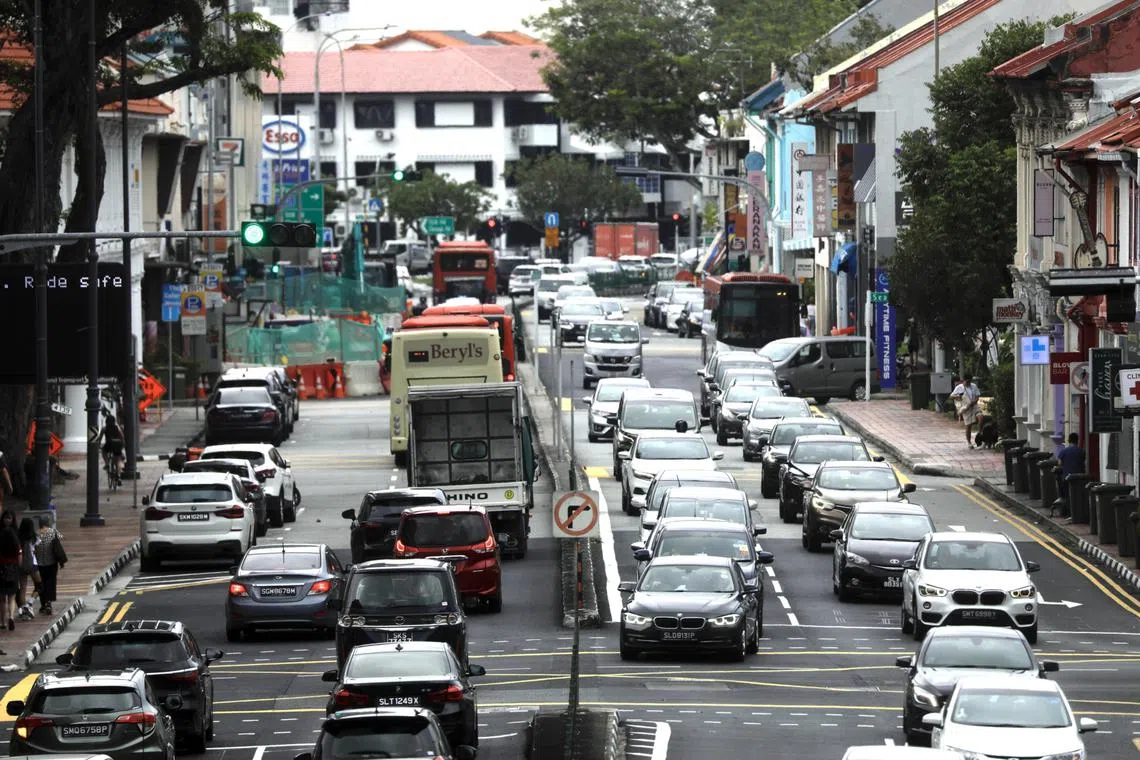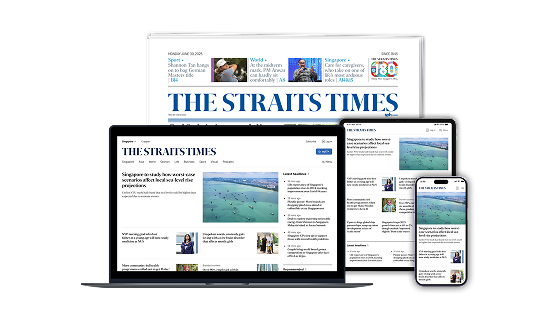More COEs from future peak years to be brought forward to tackle supply trough: Chee Hong Tat
Sign up now: Get ST's newsletters delivered to your inbox

The authorities will ensure the certificate of entitlement supply in the upcoming quarters will continue increasing till the peak supply years of 2026 and 2027.
ST PHOTO: KELVIN CHNG
Follow topic:
SINGAPORE – More certificates of entitlement (COEs) that are guaranteed to expire in future peak supply years will be brought forward to fill the present supply troughs, as the Government moves to tamp down record premiums for owning cars and commercial vehicles here.
This will be done while maintaining Singapore’s zero-vehicle growth policy, said Acting Transport Minister Chee Hong Tat in Parliament on Monday. The hope is that COE prices will moderate as a result.
“We will also ensure that the COE supply in the upcoming quarters will continue to increase in 2024 till the peak supply years in 2026 and 2027,” he said.
Yet, in answering questions filed by more than 10 MPs on the issue, Mr Chee made the point that COE prices also depend on market demand, which he said is not within the Government’s control.
“I need to be upfront with everyone that it is not possible to predict how prices will move in the next few rounds of COE bidding, but I want to assure honourable members and the public that (we) are doing what we can to address the concerns,” he said.
Mr Chee described the Government’s approach to reducing supply volatility as “cut and fill”.
The first instance of the Land Transport Authority (LTA) bringing forward future COE quota was in May, when it said it would redistribute over several quarters about 6,000 five-year car COEs
As car COEs that have been revalidated or extended for five years cannot be extended further, these cars have to be deregistered, guaranteeing that their COEs will eventually re-enter the bidding pool.
LTA said then that the redistribution of these COEs was meant to be a one-off exercise.
Nevertheless, even though COE supply has increased over the last six months, demand has remained strong and premiums have continued climbing, Mr Chee said on Monday.
Hence, LTA made a similar move to bring forward more COEs last Friday, announcing the injection of an extra 1,409 COEs for cars
LTA also added 205 COEs for commercial vehicles, but these came from quota adjustments that were made to account for a change in May to the commercial vehicle COE supply formula
Mr Chee said industry players welcomed Friday’s news, as the supply injection this time was more significant than before.
He pointed out that the quota for the small and bigger car COE categories will be 35 per cent higher than the preceding quarter’s, and this increase is larger than the proportion of bids won by car-leasing companies in the last three quarters.
Asked by Mr Saktiandi Supaat (Bishan-Toa Payoh GRC) if there were trade-offs with the Government’s cut-and-fill approach, Mr Chee warned of the risk of more cars on the roads in the short term, before some are deregistered in the peak supply years.
“We are effectively... borrowing from the future,” he said. “That is also why... we have to be quite calibrated and not overdo this cut and fill, because there will be downsides in the short term.”
The debate in Parliament comes at a time when COE premiums are at all-time highs, driven by robust demand and a restrictive supply.
At the last COE tender ending on Oct 18, the premium for larger cars ended at $150,001, while that for the Open category – which can be used for any vehicle type except motorcycles but ends up being used mostly for bigger cars – came in at $158,004.
It was the sixth consecutive time that records were broken for the large car and Open COE categories.
The COE price for smaller cars also climbed to $106,000, and the commercial vehicle premium remained high at $84,790.
Mr Chee said Singapore is facing a tight COE supply for cars and commercial vehicles because many existing vehicles have not reached the end of their COE period and are not due for deregistration.
COE supply in these categories is expected to rise significantly from the second half of 2024 before reaching its peak in 2026 and 2027.
Mr Chee noted that the large difference in supply during the peak and trough years results in higher COE price volatility.
He said a better outcome for everyone involved can be achieved if this “peak-to-trough ratio” is reduced.
While steps have been taken to increase the COE supply for cars and commercial vehicles, there have been no changes made for motorcycles. The premium for the category was $11,201 at the last bidding exercise.
Leader of the Opposition Pritam Singh asked Mr Chee whether the Government could allow a marginal increase in the motorcycle population, given that they take up a significantly smaller road footprint.
In response, Mr Chee said there are no plans to increase the growth rate of motorcycles because they can still contribute to traffic congestion.
Furthermore, the zero-growth policy applies to motorcycles, as they may be used for both commercial and personal purposes. This is unlike commercial vehicles, which are mostly used for business needs.
Even so, Mr Chee said the Government recognises that some Singaporeans rely on motorcycles for their livelihoods, and there is a higher share of lower-income individuals who own motorcycles.
This is one reason why main vehicle taxes (or additional registration fees), road taxes and Electronic Road Pricing charges for motorcycles are lower than those for other vehicle types, he noted.
Mr Chee said moves have also been made to guard against speculative bidding in the motorcycle COE category.
“We will continue to study ways to improve the COE system for Category D (for motorcycles),” he added.


